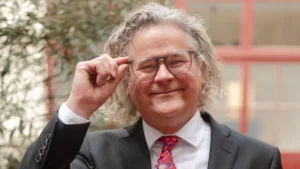by James Heimers, Decision Science Director, Code Worldwide
For the past few months many in the data and tech world have been waiting in fear for the launch of iOS15. We had been warned that its new Mail Privacy Protection (MPP) would mark the death of the ’email open’, which has been a staple of CRM measurement, segmentation, and optimisation.
But in reality, the new operating system has probably done us a favour as the importance of measuring opens has been long overstated. Here at Code, we have adapted and pushed clients harder to focus on more than the email open – after all, it is just one of many metrics that help us understand who their customers are.
For those resistant to change or lovers of email opens, there are still solutions available, such as creating proxy open rates by isolating opens from Apple devices or forecasting based on previous behaviours. It’s a quick win, but what we need to do is look beyond the email. Using a wider set of KPIs across all channels, we can better understand customer engagement. While this aids our measurement, it will also capture more customer signals, which are key to us building a more accurate picture of a customer and unlocking personalisation at scale.
A multi-dimensional view
Given an open is only one signal, why would we limit ourselves to just measuring opens? The more customer signals we have, the more recognisable our picture of the customer becomes and therefore the more relevant our personalisation becomes. We’ve even proven it. Our analysis shows going from 3 to 5 customer signals increases the effectiveness of our propensity models by up to 50%. That’s why we have made it our mission to collect as many signals as possible, to win the race to hyper relevancy.
The value of these signals is realised when we stitch them together to build multi-dimensional views of our customers, right down to their personality. These views provide the fuel for the personalisation engine. By knowing an individual’s motivations and personality we can deliver experiences that adapt to the individual’s needs, behaviours, and aspirations.
It is essential to move away from purely measuring opens, as they have never been wholly accurate. iOS15 is a timely reminder that opens are measured when a tracking pixel is triggered by an email’s content being downloaded. These pixels regularly give false information, whether it’s from Outlook blocking images on an email a customer reads, or a mobile customer pre-downloading content that was never seen. We build Customer Experience scores of all consumer signals to understand engagement, rather than just one shady metric.
Purely measuring email opens forces us to assess one channel in isolation. It is the connected customer journeys that help us realise the maximum value from marketing budgets, by moving people to action. This can be proved with a multi-touch attribution model that gives a picture of all customer interactions in the build up to a purchase. By allocating revenue based on the impact of each touchpoint, we can measure the performance of our marketing spend, but more importantly prove the importance of customer engagement in driving conversions.
Beyond the open
To be truly impactful and relevant, we need to expand our view of the customer beyond an email open and their interactions with the brand, as there are other signals that will trigger them to action. By understanding the role of the world around us in relation to consumer decision making we will be able to be contextually relevant. At Code we recognise the impact of factors such as changes in weather, social sentiment, and COVID-19 cases, so are developing alert systems to notify clients of emerging trends and trigger relevant communications to customers.
iOS15 was never anything to fear and will hopefully force the industry to stop looking at email opens in isolation. I really hope we stop asking what the open rate was for the Christmas campaign and start looking at the bigger picture. At Code, we continue to stand up for individuality by considering the entire customer experience. Only by championing this through setting holistic measures and capturing as many signals as possible will we understand customer needs. And only when we flex our approach to the customer and their current context will finally be able to deliver on the promise of individual customer experiences at scale.









